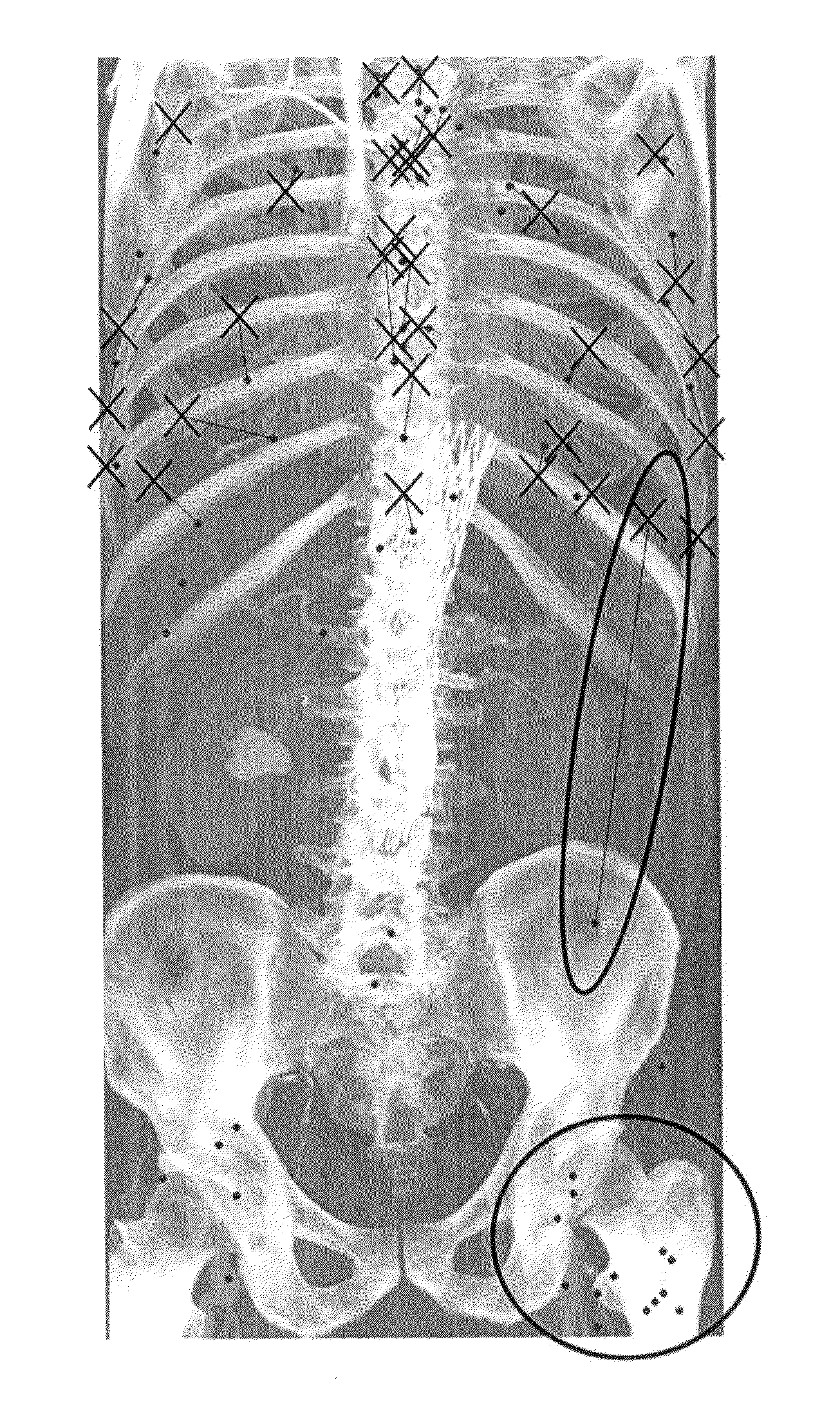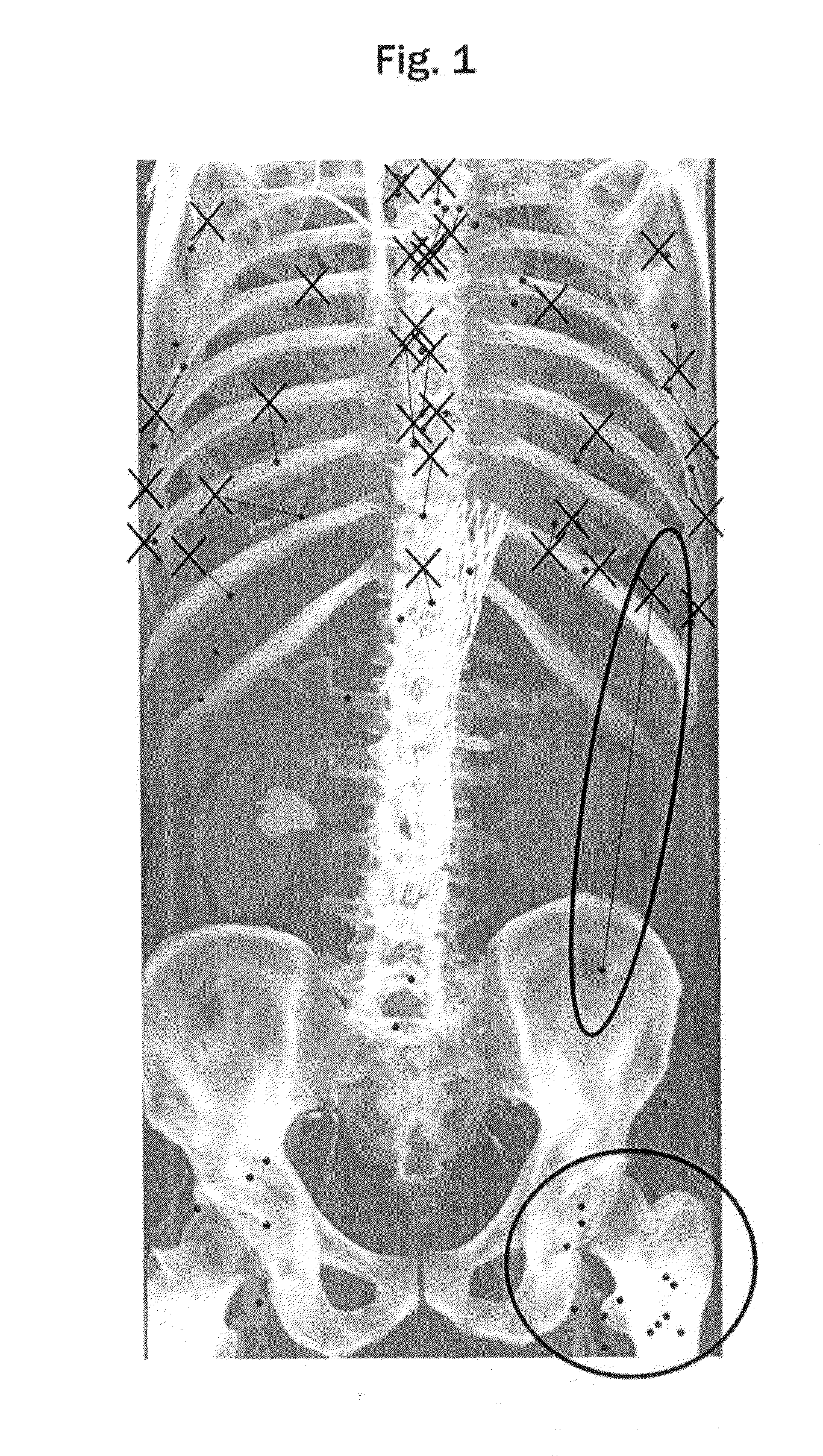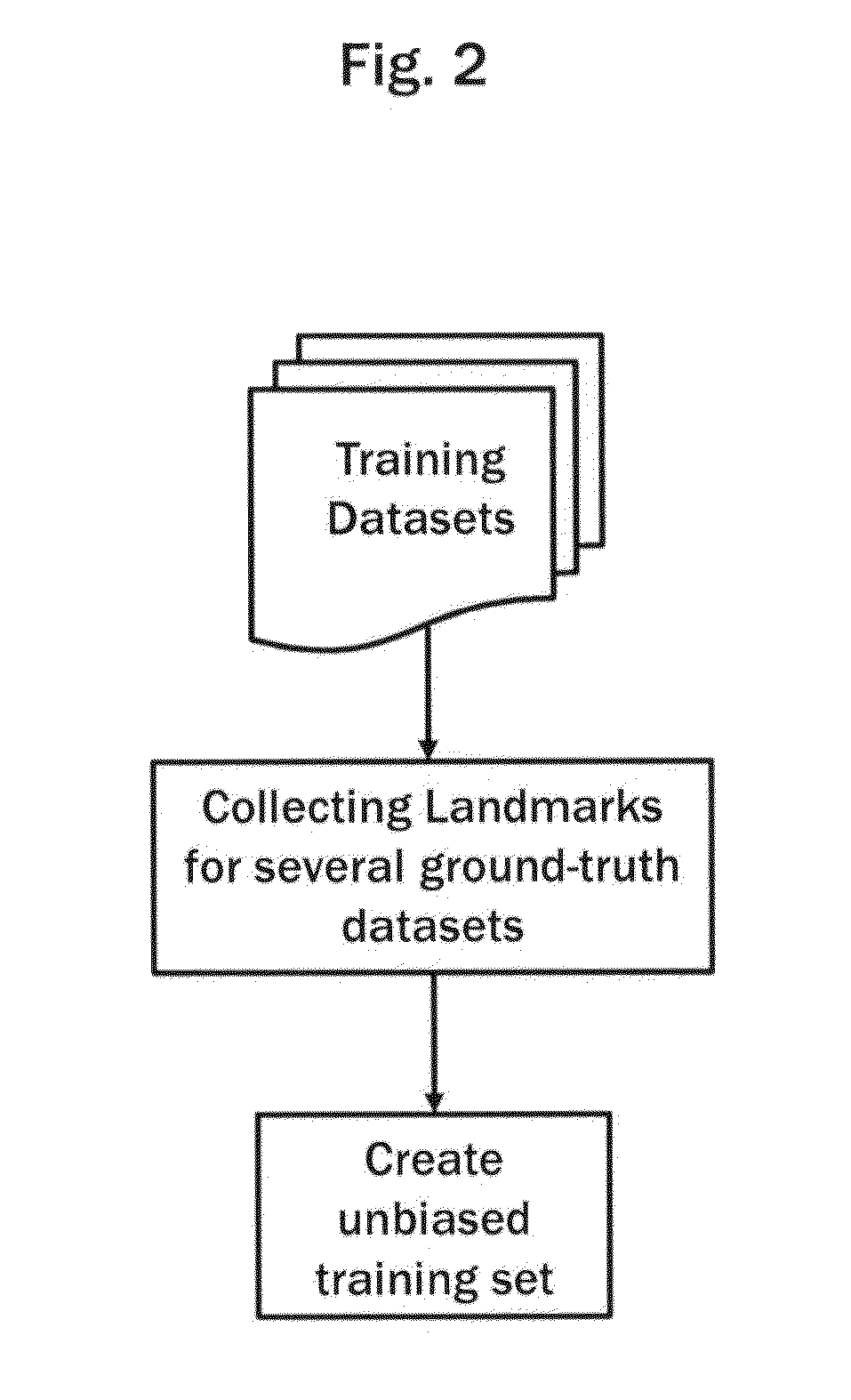Positioning anatomical landmarks in volume data sets
anatomical landmarks and volume data sets are applied in the field of three-dimensional (3d) image data sets, which can solve the problems of inherently dynamic and noisy, incorrect configuration of detected landmarks, and incorrect identification of landmarks, so as to avoid the error of correcting the placement of other landmarks
- Summary
- Abstract
- Description
- Claims
- Application Information
AI Technical Summary
Benefits of technology
Problems solved by technology
Method used
Image
Examples
examples
[0147]FIG. 12 shows a CT image of the human body. The cross points are ground truth landmarks. The dot points are the landmarks as positioned by the above described method of using a decision forest to initially place the landmarks followed by using a PDM to adjust the landmark positions. The lines interconnect corresponding landmarks and thus show the error from ground truth of the automatically placed landmarks.
[0148]As well as correcting the detection rates and locations of landmarks placed by the decision forest, the PDM also infers unmarked landmarks (as shown in the head).
[0149]FIGS. 13 to 18 show a number of pairs of CT images labelled A and B, where the ‘A’ label images show the intermediate result after the initial landmark placement by the decision forest, but before optimisation using the PDM, and the ‘B’ label images show the final result after the PDM has been applied. As in previous figures, the cross points are ground truth landmarks, the dot points are the automatica...
PUM
 Login to View More
Login to View More Abstract
Description
Claims
Application Information
 Login to View More
Login to View More - R&D
- Intellectual Property
- Life Sciences
- Materials
- Tech Scout
- Unparalleled Data Quality
- Higher Quality Content
- 60% Fewer Hallucinations
Browse by: Latest US Patents, China's latest patents, Technical Efficacy Thesaurus, Application Domain, Technology Topic, Popular Technical Reports.
© 2025 PatSnap. All rights reserved.Legal|Privacy policy|Modern Slavery Act Transparency Statement|Sitemap|About US| Contact US: help@patsnap.com



